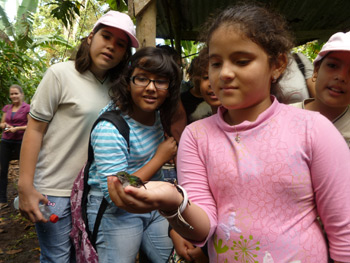Latin America and the Caribbean Program 2011 |
|
| Total Number of Grants Awarded | 9 |
| Total Funds Distributed Through Grants | $757,921 |
| Total Partner Contributions Leveraged by Grants | $910,712 |
| Total Number of Countries that Received Program Support | 6 |
The Latin America and Caribbean region is one of the most environmentally diverse and important regions on the planet, with landscapes ranging from tropical rainforests to arid deserts, from island paradises to snowy mountaintops, and an array of wildlife including tapirs, jaguars, macaws, manatees, giant anteaters and countless other species.
Unfortunately, the landscapes and wildlife of Latin America and the Caribbean are facing serious threats, including habitat degradation and loss, invasive species, pollution, over-exploitation of natural resources, and climate change. At the root of most of these threats are social, political, and economic factors including human poverty, population growth, and inadequate policy planning and implementation.
Solving these problems requires strengthening the ability of local people and organizations to deliver effective conservation. For the past 30 years, the U.S. Fish and Wildlife Service's Wildlife Without Borders-Latin America and the Caribbean program has provided critical support to the region’s efforts to conserve and manage biodiversity. We are supporting training that strengthens the ability of people and organizations to implement conservation programs in a way that takes their local culture and economy into account.

Credit: CATIE
In 2011, the program awarded $911,000 and leveraged another $758,000 towards 9 projects in countries throughout the region. Projects include:
- Belize: Changing attitudes and behaviors towards conservation through coordinated and integrated landscape management in the Maya Golden Landscape.
- Caribbean-wide: Employing radio and community action campaigns to promote climate change resilience and biodiversity conservation.
- Colombia: Expanding sustainable economic activities for rural communities and reducing dependence on forests critical to cotton-top tamarins.
- Guatemala: Reducing human-jaguar conflict in the Maya Biosphere Buffer Zone through outreach and training programs for local ranchers and owners of domestic animals.



